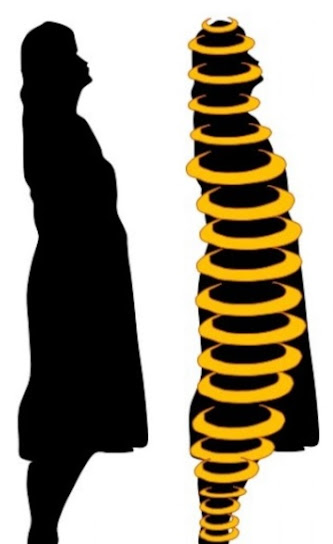Overview
When a specific body part is in an abnormal state (blood circulation, muscle stiffness/relaxation/damage, etc.), neurosensory sensations are perceived differently in the brain. By perceiving your own individual body parts with your eyes closed, you can identify the specificity of neurosensory perception of parts that are in abnormal states in the short and long term.
In this method, you first close your eyes and imagine a virtual body that exists in the same size and position as your real body. Then, your visual focus flies inside your body in an isokinetic spiral path. During this process, areas of the body that are in an abnormal physical state will experience neurosensory resistance to the movement of this visual focus, which is detected by the brain. The areas where this neural resistance is perceived are judged to be in an abnormal state in terms of blood circulation, muscle stiffness/relaxation/damage, etc.
This neural resistance can detect not only when the body is in an abnormal state in the short term, but also the activity of neural structures with different degrees of development according to the principle of neuroplasticity in the long term. Repeated efforts to penetrate the visual focus into the abnormal part of the body where the resistance is occurring can also trigger a healing effect by creating an attentional focusing effect, which to some extent improves blood circulation and increases neural activity.
Specificity Detection Procedure
1. while sitting or standing upright, close my eyes and visualize an imaginary body of the same shape as the real one, with my consciousness envisioning my entire body in the same position where it actually exists.
2. the imaginary visual focus flies at a constant rotational speed from the bottom to the top inside the body conjured from above.
3. During this process, you may encounter areas of resistance where you feel the visual focus slowing down or bouncing back. This is the area where the nerve cells are in an abnormal state due to muscle contraction or poor circulation, which is what we are looking for. Muscle contraction means that the muscle cannot relax and remains tense.
4. While continuing to try to bring your visual focus to the area of resistance, deliberately contract/relax the muscles around this area in small increments. Change your posture slightly. At some point, the resistance will weaken or disappear and you will be able to regain your airspeed (this is similar to what happens when a big social issue breaks out and the media focuses attention on it, resulting in a significant improvement).
5. Continue flying to the next area while maintaining the attitude that caused the drag to disappear.
6. repeat steps 4 and 5 above to fly to the crown of the head, eliminating subsequent areas of resistance. Most people will feel their spine extend at some point during this process.
7. Afterward, open your eyes and look at the position you are in. If you've followed the instructions above, you should find that your head is at a gaze angle of about 40 degrees or more.
8. You can judge the degree of poor posture in that area by the strength of the resistance you felt during the above process.
Healing Activity Procedure
1. while sitting or standing upright, close your eyes and visualize an imaginary body of the same shape as the real one in the same location as the specific body part where resistance was perceived above in your consciousness.
2. If the imaginary visual focus attempts to fly at a constant speed of rotation from the bottom to the top inside the specific body part imagined above, resistance is again perceived. As you continue your visualization of this area, deliberately contract/relax the muscles around this area in small increments. Change your posture slightly. At some point, the resistance will weaken or disappear, and you will be able to regain airspeed (this is similar to what happens when a big social issue breaks out and the media focuses attention on it, resulting in a significant improvement).
3. Take a break.
4. repeat steps 1-3 a few times (If the body is in a very bad condition, it may take several months (several times a day) of practicing the above steps 1-3 to have a meaningful effect)).

No comments:
Post a Comment